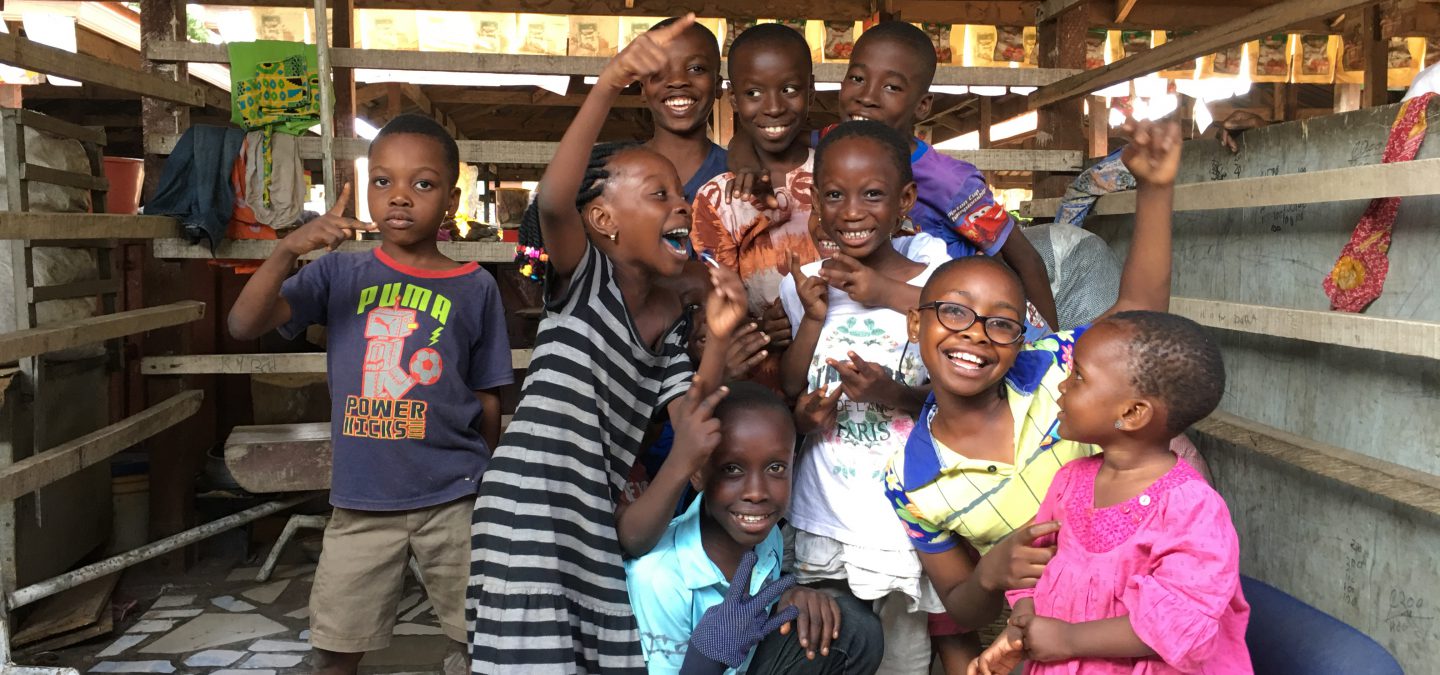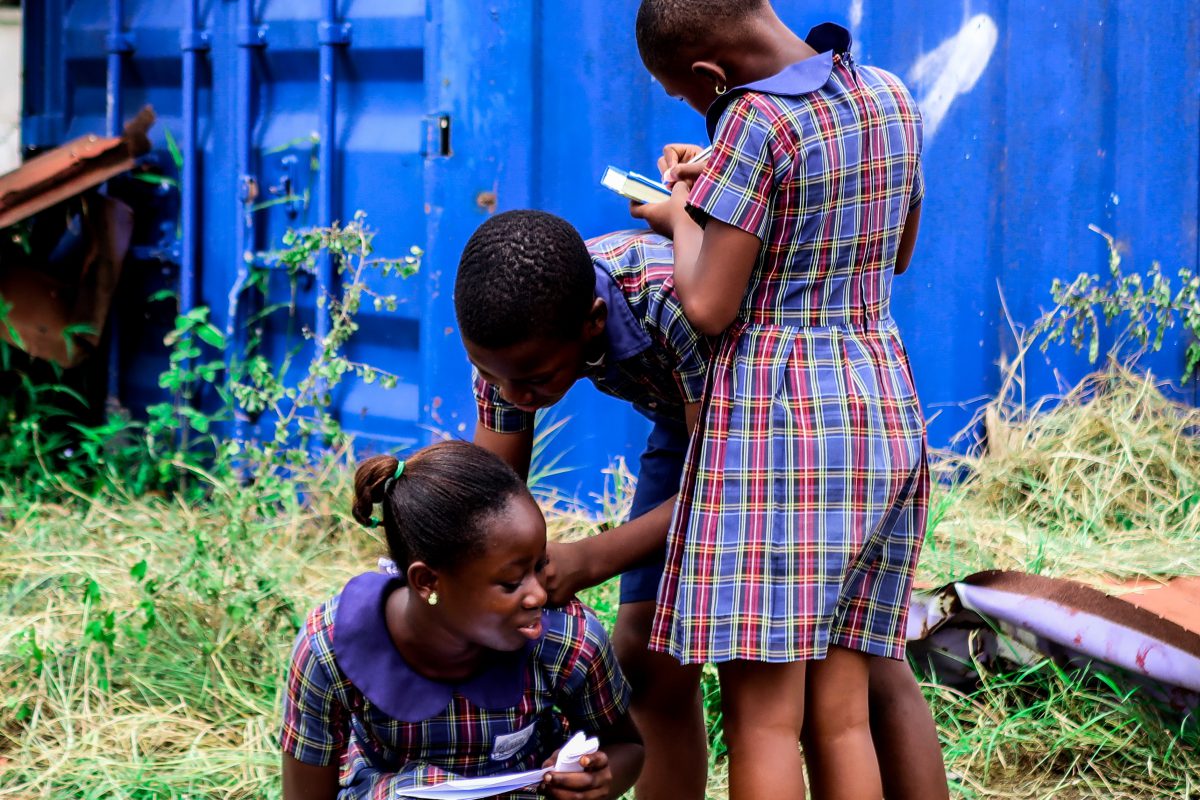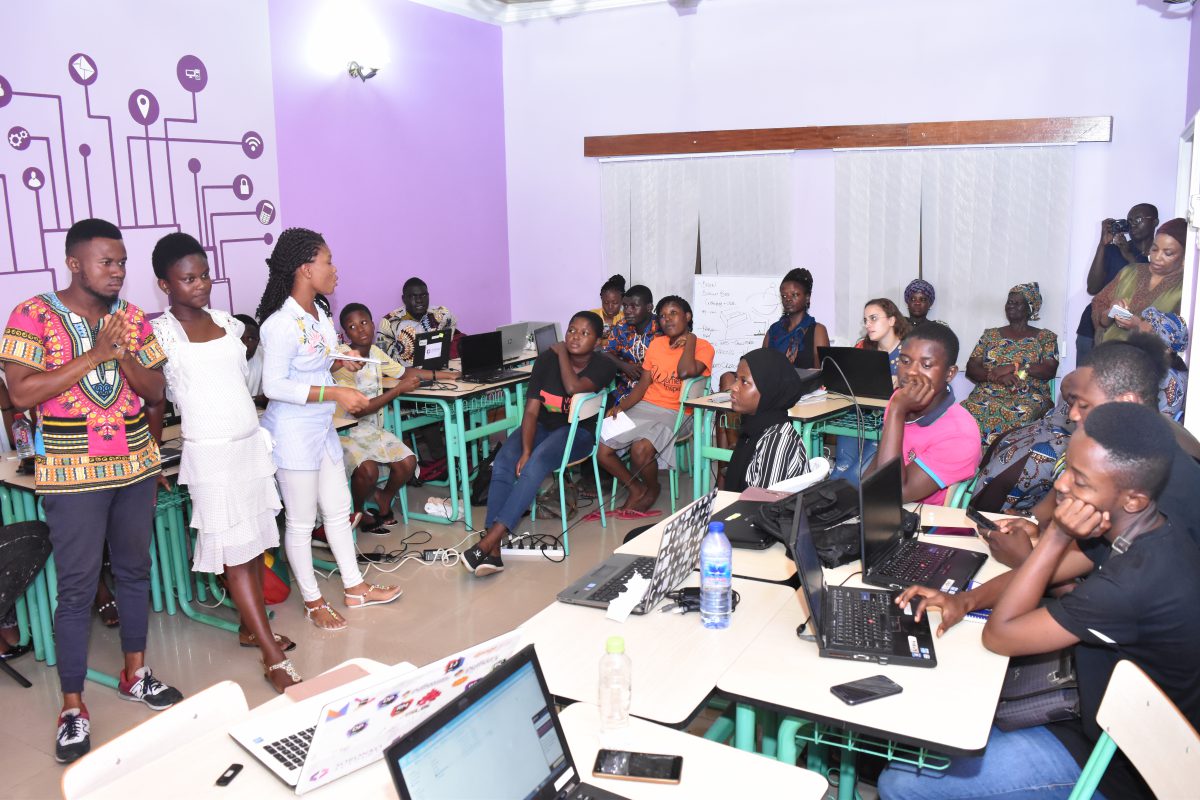
Keep up with our latest news and projects!

Mmofra Foundation, a Ghanaian NGO advocate for children’s public space, has been engaged in community projects throughout 2017/18 sponsored by UN-Habitat’s Block by Block charity through the Liveable Cities programme of Healthbridge Canada. This chapter describes how the Block by Block methodology, with clearly prescribed steps using the Minecraft game, has been applied in both a park and a market, possessing dynamics and outcomes unique to each.
Three 10-year-olds in Accra, Ghana stand on a derelict park site, noting in their newly issued project notebooks the scrap heaps, weedy mounds, and activity on the open space next to their school in the Teshie-Nungua Estate neighbourhood. A few months later, they will see their concepts become reality as the park slowly begins to take form. Barely able to wait until the construction is finished, they — now accomplished designers — and their peers from Precious Jewels Primary School will eagerly test the features in a playground of their own making.
Elsewhere in the city, a large group of teens and twenty-somethings gather under an event shed in the Mallam Atta Market where their female relatives are vendors. This time, the goal of the participatory design is to use the Minecraft tool to generate ideas for making pockets within the market safer and more playful for the children who accompany their market-vendor-mothers to work.
 Children doing site analysis, Teshie-Nungua Park (Accra, 2017)
Children doing site analysis, Teshie-Nungua Park (Accra, 2017)
Spatially and conceptually, the park is presented quite differently from the market. An open space clearly bound by named streets and formally identifiable in urban plans, the park was relatively simple to model. The much more intimate and informal scale of the market project required more sensitivity in observing the use of the market (from routines to navigation) in order to plug into the existing ecosystem without disrupting its function. This posed a challenge to communicate concepts that were not centralised around any single point but designed to enhance the existing overall experience.
Where a park would already be associated with notions of relaxation, play, and children, the West African Market as a deliberately playable and child-friendly environment is a new idea which many are sceptical — understandably, given the scarcity of successful models. Communication was crucial.
 Youth presenting ideas for Market at Soronko Academy (Accra, 2018)
Youth presenting ideas for Market at Soronko Academy (Accra, 2018)
For the Minecraft training workshop itself, the Teshie-Nungua Park project luckily accessed the use of a well-equipped computer lab offered for use by SAPS, another neighbourhood school which also facilitated the active participation of its current and former students. With a multi-generational age spread from 10 to 60 in the workshop, we anticipated some culturally-induced hesitation on the part of the younger participants to express themselves freely in the midst of much older people — unnecessarily as it turned out because their relative familiarity with the technology was a balancing advantage. The extensive site visit followed by a trip to Mmofra Place, a functioning park under Mmofra Foundation’s stewardship, granted participants to feel comfortable in talking to each other, thus, making it easier for people to exchange and develop ideas.
Minecraft for the market was slightly more difficult, the first concern being that closing up shop to attend a game training for three full days would not be an option for most vendors. However, they might be persuaded — and were indeed — to send their children and family members during their break from school to learn something potentially useful. Raised in and around the market themselves, these young people were experts in their own right on current conditions in that space, on which they shared passionate views.
In the end, the logistics of setting up rented laptops in open-air conditions with potentially unstable power sources led us to an alternative option, which proved highly successful. Soronko Solutions, a local NGO with an excellent record of IT training for girls from under-resourced communities, stepped in to offer not only a lab but also a cadre of nine young women already familiar with computers who could, with the site and technical orientation in advance, be assigned leadership roles during the workshop. In this way, we achieved a gender balance with women in IT leadership roles usually occupied by men.
Bused daily from Mallam Atta Market to the Soronko Lab, the market youth very quickly got the hang of the game and into the rhythm of discussing issues that would inform their design ideas. Here, we noted that validating participants’ concept of “public space” (in their experience, inclusive of walled spaces for example) was an important initial step towards drawing them into thinking about multi-functional space that can be manipulated in order to extract maximum value for children. With the many urgent needs of the market-foremost in the minds of participants, it was challenging to shift towards thinking about the project primarily at child scale as the Minecraft workshops tend to promote participants to explore independent initiatives. Mmofra felt it was important for participants to orient themselves during the first day on generic design improvements for space with many needs including details for walkways and lighting. This allowed the participants to focus on child-oriented designs during the second day.
While the generic solutions reached certainly could be seen as beneficial to all market users including children, many of the final models missed the child-focused enhanced play experience central to the design brief. That said, each of the solutions offered could be explored at child scale, and so the Mmofra design team were able to leave with some guidance as to what main concerns were in the market, and how, in designing these play spaces, one could incorporate solutions to the overall issues. The solutions designed, are conscientious and replicable in markets (across Accra – like in neighbouring Nima Market – and West Africa), and make use of easily sourced and affordable materials.
As the team goes into construction it will be interesting to see how the spaces play out — not just physically, but socially — how to market residents, particularly the children, interact with them. Mmofra looks forward to sharing the outcomes of the construction.
This article belongs to a series of stories about the city at eye level for kids! You can access the full book online in PDF or pre-order your hardcopy to be delivered to your home.
Get your book here